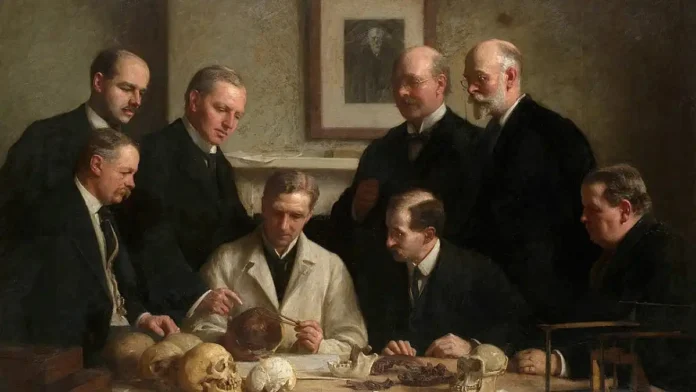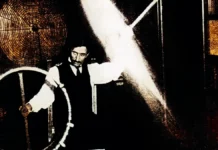
There have been many incidents in history that have always attracted and thrilled people, but there have also been many incidents that have been viewed with suspicion, legal controversy, and embarrassment, one such incident is the story of Piltdown Man. It created controversy and embarrassment and was also seen as a matter of shame and fraud. This mysterious fossil discovery has been hailed as a vital link in the human evolutionary chain, enthralling the scientific community for decades before its true nature was revealed. The Piltdown Man mystery is a cautionary tale of deception, ambition, and the resilience of scientific inquiry. This article let us learn the interesting story behind Piltdown Man and analyze the events that unfolded and their impact on our understanding of human evolution.
Contents
What is Piltdown Man?
The Piltdown Man was a fake paleoanthropological claim where some bone fragments evidence were claimed to be fossilized remains of early humans. People had doubts about it since 1912, but this evidence was accepted for many years, and people believed it for a long time. In 1953, it was finally proven to be a hoax and fraud. In 2016, a scientific study showed that Charles Dawson, an amateur archaeologist, was behind the fake evidence.
The story of the Piltdown Man starts from a 1912 discovery that shook the world when Charles Dawson claimed that he had discovered the “missing link” between early apes and humans.
The Discovery that Shook the World
The Piltdown Man discovery was announced in 1912, when Charles Dawson, an amateur archaeologist, claimed to have unearthed fossilized remains of early humans in Piltdown, a village in Sussex, England. The finding was groundbreaking, as it seemed to bridge the gap between apes and humans. By February 1912, Dawson had informed the Natural History Museum’s Keeper of Geology, Arthur Smith Woodward, that he had discovered a piece of a human-like skull in Pleistocene gravel beds close to Piltdown, East Sussex. More bones and artifacts were allegedly found at the site that summer by Dawson and Smith Woodward, who linked them to the same person. Among these discoveries were a set of teeth, a jawbone, other skull pieces, and early tools. The skull had a large braincase similar to Homo sapiens, coupled with a primitive jaw resembling that of an ape. This amalgamation of features suggested an evolutionary missing link, sparking immense excitement within the scientific community.
Charles Dawson stated that he had received a piece of the skull four years prior from a worker at the Piltdown gravel quarry during a meeting of the Geological Society of London on December 18, 1912. Dawson claims that shortly before his visit, workers at the location found the skull and broke it up, thinking it was a fossilized coconut. Dawson took further pieces of the skull to Arthur Smith Woodward, the keeper of the geological department at the British Museum, after returning to the scene multiple times. Woodward went to the location with Dawson since he was so intrigued by the discoveries.
Even though the two collaborated from June to September of 1912, Dawson was able to recover half of the lower jaw and other skull parts on his own. The majority of the other components were found in the spoil heaps of the gravel pit; the skull, which was discovered in 1908, was the only item found in situ. After reconstructing the skull fragments, Smith Woodward postulated that they belonged to a 500,000-year-old human progenitor. The find was dubbed Eoanthropus Dawsoni (“Dawson’s dawn-man”) after it was revealed at a Geological Society conference.
Several researchers vigorously contested Woodward’s reconstruction of the Piltdown fragments almost immediately. The Royal College of Surgeons created a completely different model, one that matched a modern human in terms of brain size and other traits, using duplicates of the identical materials used by the British Museum in their reconstruction. Because of its more human-like look, this reconstruction by Prof. Arthur Keith was given the name Homo piltdownensis. Otto Schoetensack, who had found the Heidelberg fossils only a few years earlier, likewise regarded the find as authentic, calling it the strongest evidence yet for an ape-like origin of modern humans. Along with Woodward, Pierre Teilhard de Chardin, a French Jesuit paleontologist and geologist, contributed to the discovery of the Piltdown skull.
Woodward’s reconstruction caused controversy due to the inclusion of ape-like canine teeth. In August 1913, Woodward, Dawson, and Teilhard de Chardin actively searched the spoil heaps to locate the missing canines. According to Woodward, Teilhard de Chardin quickly found a canine that matched the jaw perfectly. Shortly after, Teilhard de Chardin moved to France and was not involved in further discoveries. Despite Woodward expecting the find to settle disputes about his skull reconstruction, Keith criticized the discovery, emphasizing that the tooth “corresponds exactly with that of an ape.”
Keith said that when humans chew, their molars move side to side. But the canine stopped this movement in the Piltdown jaw, making it impossible. To make sense of the wear on the molars, the canine had to be lower than them. Another anthropologist, Grafton Elliot Smith, supported Woodward and accused Keith of opposing him to get ahead. Keith later mentioned, “That’s how our long friendship ended.”
As far back as 1913, David Waterston from King’s College London wrote in Nature that the specimen was a combination of an ape’s lower jaw and a human skull. Similarly, in 1915, French paleontologist Marcellin Boule reached the same conclusion. Another perspective came from American zoologist Gerrit Smith Miller Jr., who stated in 1915 that the Piltdown jaw belonged to a fossilized ape. In 1923, Franz Weidenreich examined the remains and accurately identified them as a modern human skull and an orangutan jaw with intentionally altered teeth.
In 1915, Dawson said he found three parts of a second skull (Piltdown II) about two miles away from the first discovery. Woodward tried to find out where, but Dawson didn’t tell. The location was never found, and the discoveries were not well-documented. Woodward didn’t show the new finds to the Society until five months after Dawson died in August 1916. He hinted that he knew where they were found. In 1921, Henry Fairfield Osborn, President of the American Museum of Natural History, checked the Piltdown and Sheffield Park finds. He said the jaw and skull belonged together and that the Sheffield Park fragments were exactly what they needed to confirm the comparison with the original type.
Finding an ape’s jaw and a human skull together might have been accidental, but the chances of it happening again were low. The discoveries at Sheffield Park were seen as proof that the Piltdown Man was genuine. Even Keith, who still had some doubts, accepted the new evidence.
The Scientific Community Enthusiastic Response
The announcement of Piltdown Man sent shockwaves through the scientific community, providing a compelling narrative for those studying human evolution. Researchers and scholars eagerly embraced the discovery, using it to support various theories about the origins of Homo sapiens. The fossils seemed to align with preconceived notions about the evolutionary path, and Piltdown Man became a focal point in discussions surrounding human ancestry.
Many experts had doubts about the Piltdown discovery from the beginning (as mentioned earlier). Gerrit Smith Miller Jr., for instance, observed in 1915 that the way the fossils were broken made it seem like deliberate malice had succeeded, allowing individual judgment in fitting the parts together. Before Piltdown was exposed as a fake in 1953, experts started to see the site as a mysterious anomaly that didn’t match the evidence of human evolution found in other places.
Time magazine released information in November 1953, gathered by Sir Wilfrid Edward Le Gros Clark, Joseph Weiner, and Kenneth Page Oakley. A great deal of discussion about the assemblage’s dubious significance until it was definitively shown to be a fake in 1953. It was discovered that it was made up of the purposefully modified jaw and a few teeth of an orangutan fused with the skull of a fully formed, and small-brained, modern human. This evidence confirmed that Piltdown Man was a forgery and revealed that the fossil was a mix of three different species. It included a lower jaw from a 500-year-old orangutan, fossil teeth from a chimpanzee, and a medieval human skull. Someone had stained the bones with chromic acid and iron solution to make them look older. Under a microscope, file marks on the teeth were found, leading to the conclusion that the teeth had been altered to resemble those more suitable for a human diet.
At the time the hoax was uncovered, the scientific community believed that a large modern brain evolved before the current omnivorous diet. This belief made the Piltdown Man forgery highly successful. Some argue that certain British experts accepted the fossil uncritically due to nationalistic and cultural biases. It is suggested that the British were eager to establish a “first Briton” in contrast to fossil hominids discovered elsewhere in Europe. This desire may have aligned with European assumptions that the earliest humans would be found in Eurasia.
The Skeptic’s Dilemma and Decades of Deception
While many embraced Piltdown Man as a transformative discovery, few scientists expressed skepticism. Some questioned the peculiar combination of primitive and advanced features, urging caution in accepting the findings without further scrutiny. However, their voices were often drowned out by the prevailing excitement surrounding the potential breakthrough.
As years passed, Piltdown Man enjoyed a prominent place in discussions about human evolution. Numerous studies and reconstructions were based on the Piltdown fossils, solidifying its role as a linchpin in the evolutionary narrative. However, the true nature of the fossils remained elusive, concealed beneath an intricate web of deception. Suspects include Dawson, Pierre Teilhard de Chardin, Arthur Keith, Martin A. C. Hinton, Horace de Vere Cole, and Arthur Conan Doyle; but, the identity of the Piltdown forger was still unknown.
Unraveling the Hoax and proving the fraud
The unraveling of the Piltdown Man mystery began in the 1950s when advancements in dating techniques and the scrutiny of emerging paleoanthropological discoveries cast doubt on the authenticity of the fossils. In 1953, a team led by Kenneth Oakley, a British geologist, employed fluorine dating, a novel method at the time, to analyze the Piltdown remains. The results were shocking—Piltdown Man was exposed as an elaborate hoax.
The evidence from Charles Dawson’s earlier archaeological frauds in the decade or two before the Piltdown discovery supports the notion that he was the main forger. Bournemouth University archaeologist Miles Russell, upon examining Dawson’s collection of antiques, identified at least 38 specimens as fakes. Dawson’s history of archaeological frauds includes various items, such as the teeth of a multituberculate mammal called Plagiaulax dawsoni, supposedly found in 1891, whose teeth were filed down similar to how Piltdown Man’s teeth were altered 20 years later.
Other examples include the “shadow figures” on the walls of Hastings Castle, a unique hafted stone axe, the Bexhill boat a mixed seafaring vessel, the Pevensey bricks purportedly the latest datable finds from Roman Britain, the contents of the Lavant Caves a fake flint mine, the Beauport Park “Roman” statuette a combination of iron objects, the Bulverhythe Hammer shaped with an iron knife like the Piltdown elephant bone implement would be later, a fraudulent “Chinese” bronze vase, the Brighton “Toad in the Hole” a toad enclosed in a flint nodule, the English Channel sea serpent, the Uckfield Horseshoe another combination of iron objects, and the Lewes Prick Spur. His antiquarian publications mostly show signs of plagiarism or, at the very least, careless referencing.
Russell stated that Piltdown was not a single isolated hoax but rather the result of a lifetime of deceptive work. Additionally, Harry Morris, who knew Dawson, acquired one of the flints obtained by Dawson at the Piltdown gravel pit. Morris believed it had been artificially aged, stained by Dawson to deceive. Although Morris harbored deep suspicions about Dawson for many years, he never attempted to publicly discredit him, perhaps because doing so would contradict the eolith theory, which Morris strongly believed in.
Adrian Lister from the UK’s Natural History Museum has mentioned that some people have suggested the existence of a second person attempting to expose the original fraud by employing outrageous tactics. This theory, initially proposed by Miles Russell, suggests that the piece known as the ‘cricket bat’ (a fossilized elephant bone) was a poorly forged ‘early tool’ deliberately planted to raise doubts about the other discoveries. In essence, the ‘Earliest Englishman’ was being recovered alongside what seemed to be the earliest evidence for the game of cricket. This appears to be part of a broader effort by disenchanted members of the Sussex archaeological community to reveal Dawson’s activities. Other examples include the fraudulent ‘Maresfield Map,’ the ‘Ashburnham Dial,’ and the ‘Piltdown Palaeolith.’ However, despite raising suspicions among some, the ‘cricket bat’ was accepted at the time and ultimately contributed to the eventual acknowledgment of the fraud decades later.
In 2016, the findings of an eight-year review of the forgery were released, revealing Dawson’s modus operandi. The study showed that multiple specimens shared a consistent preparation method: applying stain, filling crevices with local gravel, and securing teeth and gravel with dentist’s putty. Shape analysis and trace DNA examination indicated that teeth from both sites belonged to the same orangutan. The uniform method and shared source suggested the involvement of one person in all the specimens, and Dawson was the only one linked to Piltdown II. While the authors did not dismiss the possibility of someone else providing false fossils to Dawson, they ruled out several other suspects, including Teilhard de Chardin and Doyle. This decision was based on the skill and knowledge demonstrated by the forgeries, closely aligning with contemporary biological ideas at that time.
In contrast, Stephen Jay Gould believed that Pierre Teilhard de Chardin collaborated with Dawson in the Piltdown forgery. Teilhard de Chardin had traveled to African regions where one of the anomalous finds originated and had been residing in the Wealden area since the time of the earliest discoveries. However, some argue that he was “without doubt innocent in this matter.” Hinton left a trunk in storage at the Natural History Museum in London, which was discovered in 1970 to contain animal bones and teeth carved and stained similarly to the Piltdown finds. Phillip Tobias implicated Arthur Keith, detailing the history of the hoax investigation, dismissing other theories, and pointing out inconsistencies in Keith’s statements and actions. Some investigations propose that the hoax involved accomplices rather than a single forger.
Richard Milner, an American historian of science, proposed the idea that Arthur Conan Doyle might have been the mastermind behind the Piltdown Man hoax. Milner suggested that Doyle had a plausible motive, seeking revenge on the scientific establishment for discrediting one of his favorite psychics. He pointed to Doyle’s novel “The Lost World,” which appeared to contain cryptic references implying his involvement in the hoax. In Samuel Rosenberg’s 1974 book “Naked is the Best Disguise,” it is claimed that Doyle, throughout his writings, provided overt clues to hidden or suppressed aspects of his thinking, supporting the notion that he could be involved in such a hoax.
Recent research has cast doubt on Arthur Conan Doyle’s involvement in the Piltdown Man hoax. In 2016, scientists from the Natural History Museum and Liverpool John Moores University conducted DNA analysis, revealing that Charles Dawson, who originally claimed to have found the remains, was responsible for the hoax. Initially, Dawson was not considered a likely perpetrator because the hoax was deemed too intricate for him to have orchestrated. However, the DNA evidence showed that a tooth Dawson had supposedly discovered in 1915 (at a different site) belonged to the same jaw as that of the Piltdown Man, indicating that he had planted both specimens. Subsequently, it was confirmed that the tooth from 1915 was also deliberately placed as part of the hoax.
Chris Stringer, an anthropologist from the Natural History Museum, expressed skepticism regarding Arthur Conan Doyle’s involvement in the Piltdown Man hoax. Stringer mentioned that although Doyle played golf at the Piltdown site and even gave Charles Dawson a ride to the area, Doyle’s busy public life made it highly unlikely that he would have had the time to orchestrate the hoax. Stringer considered these connections to be mere coincidences. According to Stringer, when examining the fossil evidence, it becomes apparent that Dawson is associated with all the finds, and Dawson was known to be personally ambitious, seeking professional recognition and aiming for honors such as membership in the Royal Society and an MBE. Dawson wanted to overcome the perception of him as an amateur in the field.
Piltdown Man Hoax’s Motives and Speculations
The revelation of the Piltdown Man hoax raised inevitable questions about who was behind this audacious deception. Subsequent investigations pointed fingers at Charles Dawson, the initial discoverer, and Sir Arthur Smith Woodward, a prominent paleontologist who championed Piltdown Man. The collaboration between these two individuals and potentially others showcased the lengths some were willing to go to shape scientific narratives.
The motives behind the Piltdown Man hoax remain the subject of speculation. Some believe it was an attempt to gain recognition, elevate one’s status in the scientific community, or even undermine the credibility of emerging evolutionary theories. Regardless of the motivations, the Piltdown Man scandal highlighted the vulnerability of the scientific process to manipulation and the need for rigorous scrutiny.
Conclusion
The Piltdown Man episode serves as a cautionary tale, reminding us of the fallibility of scientific inquiry and the importance of skepticism even in the face of seemingly groundbreaking discoveries. The impact of this elaborate hoax reverberated through the scientific community, prompting a reassessment of research practices and emphasizing the need for transparency and critical evaluation. While Piltdown Man may have been a fabrication, the lessons learned from this episode have endured, contributing to the resilience and integrity of the scientific pursuit of truth. The Piltdown hoax is well-known for two reasons: the controversy it raised over human evolution and the 41-year period that passed between its purported original discovery and its eventual debunking as a composite counterfeit.
In 1912, a significant portion of the scientific community believed that the Piltdown Man represented the “missing link” between apes and humans. However, as time passed and other discoveries like the Taung Child and Peking Man were made, the validity of the Piltdown Man diminished. R. W. Ehrich and G. M. Henderson observed that the disqualification of the Piltdown skull didn’t alter the broader evolutionary pattern for those who were not entirely disillusioned by their predecessors’ work, as the specimen’s validity had always been questioned.
Ultimately, during the 1940s and 1950s, the emergence of more advanced dating technologies, such as the fluorine absorption test, scientifically confirmed that the Piltdown Man skull was indeed a fraudulent creation.
Also Read:
- Gloomy Sunday: A Suicide Song or a Myth
- Human-Ape Hybrid: Ivanov’s Controversial Pursuit of Scientific Boundaries
Sources
- Oakley, Kenneth P., and Joseph Sidney Weiner. “Piltdown man.” American Scientist 43.4 (1955): 573-583.
- Oakley, Kenneth P., and C. Randall Hoskins. “New evidence on the antiquity of Piltdown man.” Nature 165 (1950): 379-382.
- Webb, Jonathan (10 August 2016). “Piltdown review points decisive finger at forger Dawson”. BBC.
- Spencer, Frank (1990). The Piltdown papers, 1908–1955: the correspondence and other documents relating to the Piltdown forgery. Natural History Museum Publications. ISBN 978-0198585237.
- Russell, Miles. “Piltdown man: the secret life of Charles Dawson & the world’s greatest archaeological hoax.” (2003).
- Russell, Miles. The Piltdown Man hoax: case closed. The History Press, 2012.
- Woodward, A. Smith (1913). “Note on the Piltdown Man (Eoanthropus Dawsoni)”. The Geological Magazine. 10 (10): 433–34.
- Walsh, John E. (1996). Unraveling Piltdown: The Science Fraud of the Century and its Solution. Random House. ISBN 978-0-679-44444-2.
- Gould, Stephen J. (1980). The Panda’s Thumb. W. W. Norton. pp. 108–24. ISBN 978-0-393-01380-1.
- MacRitchie, Finlay (2011). Scientific Research as a Career. CRC Press. p. 30. ISBN 978-1439869659.
- Craddock, Paul (2012). Scientific Investigation of Copies, Fakes, and Forgeries. CRC Press. ISBN 978-1-136-43601-7.
- Miller, Gerrit Smith. The jaw of the Piltdown man:(with five plates). Vol. 2376. Smithsonian Institution, 1915.
- Science: End as a Man. (1953, November 30). TIME.com.
- Teilhard and the Pildown “Hoax.” (n.d.).
- BBC NEWS | Science/Nature | Charles Dawson: “The Piltdown faker.” (n.d.).
- Ashmore, Malcolm. “Fraud by numbers: Quantitative rhetoric in the Piltdown forgery discovery.” South Atlantic Quarterly 94 (1995): 591-591.
- Jay, Gould Stephen. “Hen’s Teeth and Horse’s Toes: Further Reflections in Natural History.” (1994).
- Aczel, Amir. The Jesuit and the Skull: Teilhard de Chardin, evolution, and the search for Peking man. Penguin, 2008.
- Tobias, Phillip V., et al. “Piltdown: an appraisal of the case against Sir Arthur Keith [and Comments and Reply].” Current Anthropology 33.3 (1992): 243-293.
- Berkner, Lloyd V. “The Piltdown Forgery.” (1955): 186-188.
- McKie, R. (2023, February 25). Piltdown Man: British archaeology’s greatest hoax. The Guardian.
- Rosenberg, Sam. “Naked Is the Best Disguise: the death and resurrection of Sherlock Holmes.” (1974).
- Piltdown Man | Bournemouth University. (n.d.).
- Knapton, S. (2016, August 10). Sir Arthur Conan Doyle cleared of Piltdown Man hoax. The Telegraph.
FACT CHECK: We strive for accuracy and fairness. But if you see something that doesn’t look right, don’t hesitate to Contact us.
DISCLOSURE: This Article may contain affiliate links and Sponsored ads, to know more please read our Privacy Policy.
Stay Updated: Follow our WhatsApp Channel and Telegram Channel.











